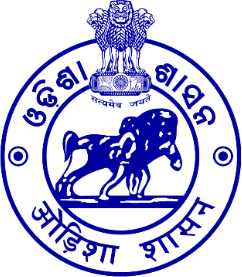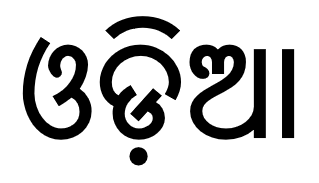|
Ghantapatua
Ghantapatuas (Odia: "ଘଣ୍ଟପାଟୁଆ") are traditional male folk dancers from the Indian state of Odisha. They work as temple servants or in the temple of the Goddess. They belong to the Bhopa or Raula caste. Etymology The name comes from Oriya words (brass bell) used in Jagannath temple and the goddess temples of Odisha, and (performer). Ghata The is an earthen pitcher filled with holy water Holy water is water that has been blessed by a member of the clergy or a religious figure, or derived from a well or spring considered holy. The use for cleansing prior to a baptism and spiritual cleansing is common in several religions, from ... kept on a wooden stand cemented by mud, vermilion and above it a flower-clad made up of coconut leaf sticks with flower hangings which represents the Goddess they worship. Ghanta The is the main accompanying instrument. Dance The dance is an offering to the goddesses Sarala, Hingula, Charchika, Bhagabati, Mangal ... [...More Info...] [...Related Items...] OR: [Wikipedia] [Google] [Baidu] |
Pana Sankranti
Pana Sankranti, ( or, ପଣା ସଙ୍କ୍ରାନ୍ତି) also known as Maha Bishuba Sankranti ( or, ମହା ବିଷୁବ ସଙ୍କ୍ରାନ୍ତି), is the traditional new year day festival of Odia people in Odisha, India. The festival occurs in the solar Odia calendar (the lunisolar Hindu calendar followed in Odisha) on the first day of the traditional solar month of Meṣa, hence equivalent lunar month Baisakha. This falls on the Purnimanta system of the Indian Hindu calendar. It therefore falls on 13/14 April every year on the Gregorian calendar. The festival is celebrated with visits to Shiva, Shakti or Hanuman temples. People take baths in rivers or major pilgrimage centers. Communities participate in (fairs), participate in traditional dance or acrobatic performances. Feasts and special drinks such as a chilled sweet mango-milk-yoghurt-coconut drink called is shared, a tradition that partly is the source of this festival's name. Pana Sankranti i ... [...More Info...] [...Related Items...] OR: [Wikipedia] [Google] [Baidu] |
Odisha
Odisha (English: , ), formerly Orissa ( the official name until 2011), is an Indian state located in Eastern India. It is the 8th largest state by area, and the 11th largest by population. The state has the third largest population of Scheduled Tribes in India. It neighbours the states of Jharkhand and West Bengal to the north, Chhattisgarh to the west, and Andhra Pradesh to the south. Odisha has a coastline of along the Bay of Bengal in Indian Ocean. The region is also known as Utkala and is also mentioned in India's national anthem, " Jana Gana Mana". The language of Odisha is Odia, which is one of the Classical Languages of India. The ancient kingdom of Kalinga, which was invaded by the Mauryan Emperor Ashoka (which was again won back from them by King Kharavela) in 261 BCE resulting in the Kalinga War, coincides with the borders of modern-day Odisha. The modern boundaries of Odisha were demarcated by the British Indian government when Orissa Province was es ... [...More Info...] [...Related Items...] OR: [Wikipedia] [Google] [Baidu] |
India
India, officially the Republic of India ( Hindi: ), is a country in South Asia. It is the seventh-largest country by area, the second-most populous country, and the most populous democracy in the world. Bounded by the Indian Ocean on the south, the Arabian Sea on the southwest, and the Bay of Bengal on the southeast, it shares land borders with Pakistan to the west; China, Nepal, and Bhutan to the north; and Bangladesh and Myanmar to the east. In the Indian Ocean, India is in the vicinity of Sri Lanka and the Maldives; its Andaman and Nicobar Islands share a maritime border with Thailand, Myanmar, and Indonesia. Modern humans arrived on the Indian subcontinent from Africa no later than 55,000 years ago., "Y-Chromosome and Mt-DNA data support the colonization of South Asia by modern humans originating in Africa. ... Coalescence dates for most non-European populations average to between 73–55 ka.", "Modern human beings—''Homo sapiens''—originated in Africa. Th ... [...More Info...] [...Related Items...] OR: [Wikipedia] [Google] [Baidu] |
Odia Language
Odia (, ISO: , ; formerly rendered Oriya ) is an Indo-Aryan language spoken in the Indian state of Odisha. It is the official language in Odisha (formerly rendered Orissa), where native speakers make up 82% of the population, and it is also spoken in parts of West Bengal, Jharkhand, Andhra Pradesh and Chhattisgarh. Odia is one of the many official languages of India; it is the official language of Odisha and the second official language of Jharkhand. The language is also spoken by a sizeable population of 700,000 people in Chhattisgarh. Odia is the sixth Indian language to be designated a classical language, on the basis of having a long literary history and not having borrowed extensively from other languages. The earliest known inscription in Odia dates back to the 10th century CE. History Odia is an Eastern Indo-Aryan language belonging to the Indo-Aryan language family. It descends from Odra Prakrit, which evolved from Magadhi Prakrit, which was spoken in east I ... [...More Info...] [...Related Items...] OR: [Wikipedia] [Google] [Baidu] |
Jagannath Temple
The Jagannath Temple is an important Hindu temple dedicated to Jagannath, a form of Vishnu - one of the trinity of supreme divinity in Hinduism. Puri is in the state of Odisha, on the eastern coast of India. The present temple was rebuilt from the tenth century onwards, on the site of pre existing temples in the compound but not the main Jagannatha temple, and begun by Anantavarman Chodaganga, the first king of the Eastern Ganga dynasty. The Puri temple is famous for its annual Ratha Yatra, or chariot festival, in which the three principal deities are pulled on huge and elaborately decorated temple cars. Unlike the stone and metal icons found in most Hindu temples, the image of Jagannath (which gave its name to the English term 'juggernaut') is made of wood and is ceremoniously replaced every twelve or 19 years by an exact replica. It is one of the Char Dham pilgrimage sites. The temple is sacred to all Hindus, and especially in those of the Vaishnava traditions. Ma ... [...More Info...] [...Related Items...] OR: [Wikipedia] [Google] [Baidu] |
Holy Water
Holy water is water that has been blessed by a member of the clergy or a religious figure, or derived from a well or spring considered holy. The use for cleansing prior to a baptism and spiritual cleansing is common in several religions, from Christianity to Sikhism. The use of holy water as a sacramental for protection against evil is common among Lutherans, Anglicans, Roman Catholics, and Eastern Christians. In Christianity In Catholicism, Lutheranism, Anglicanism, Eastern Orthodoxy, Oriental Orthodoxy and some other churches, holy water is water that has been sanctified by a priest for the purpose of baptism, for the blessing of persons, places, and objects, or as a means of repelling evil. History The Apostolic Constitutions, whose texts date to about the year 400 AD, attribute the precept of using holy water to the Apostle Matthew. It is plausible that the earliest Christians may have used water for expiatory and purificatory purposes in a way analogo ... [...More Info...] [...Related Items...] OR: [Wikipedia] [Google] [Baidu] |




